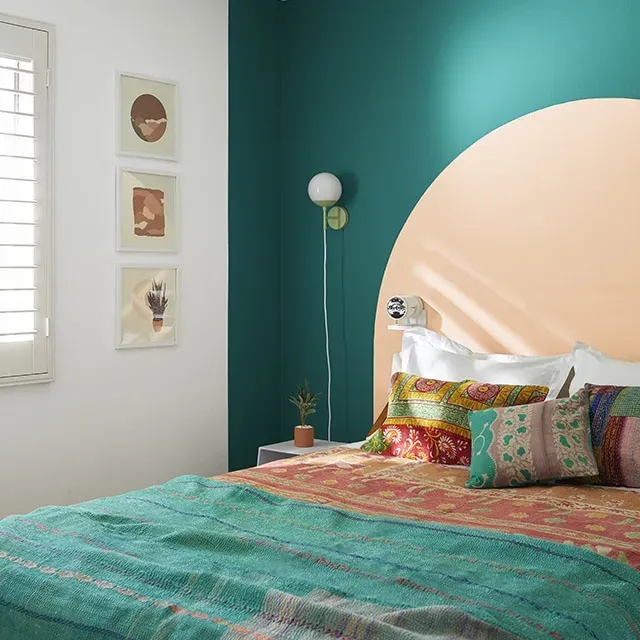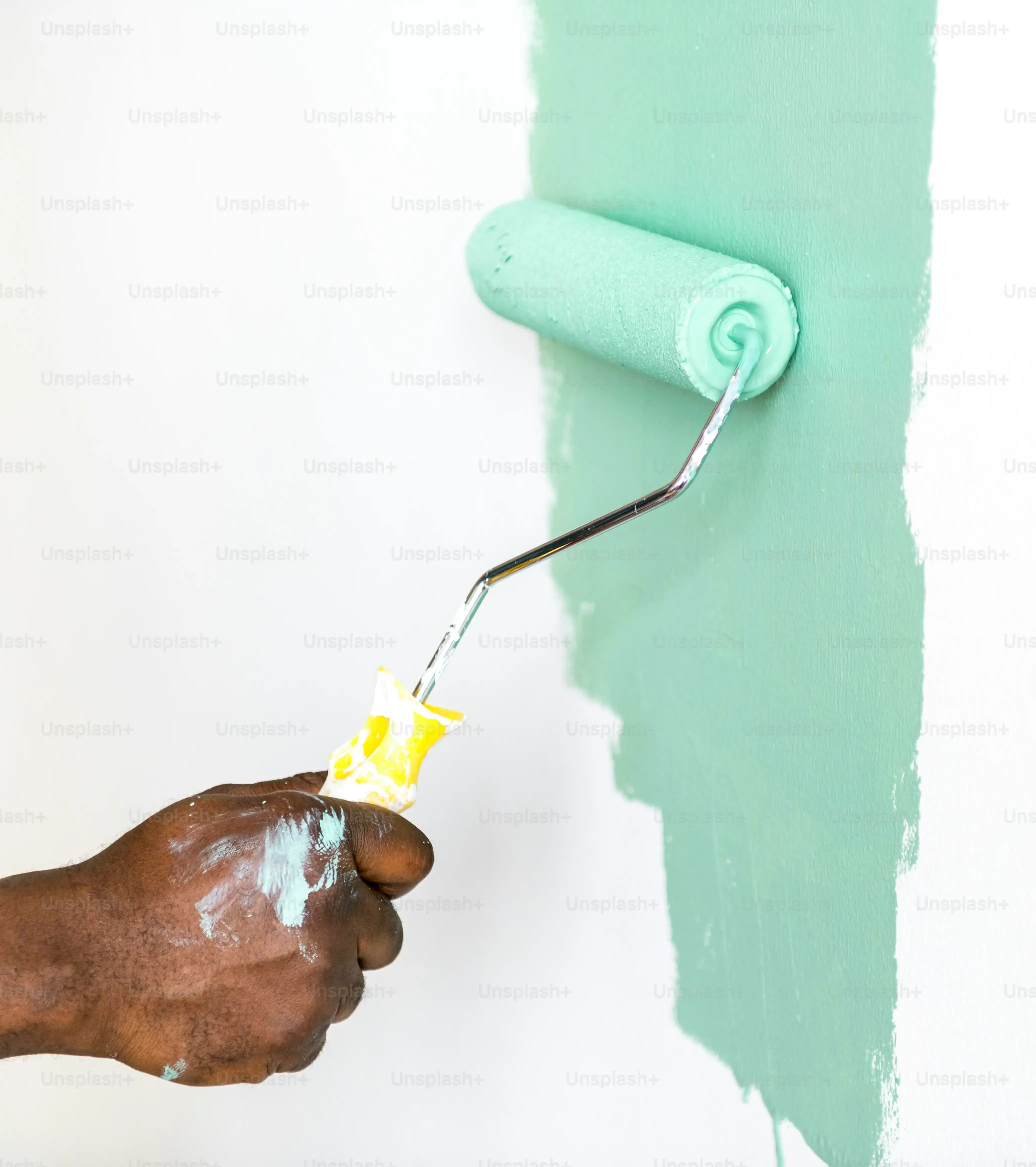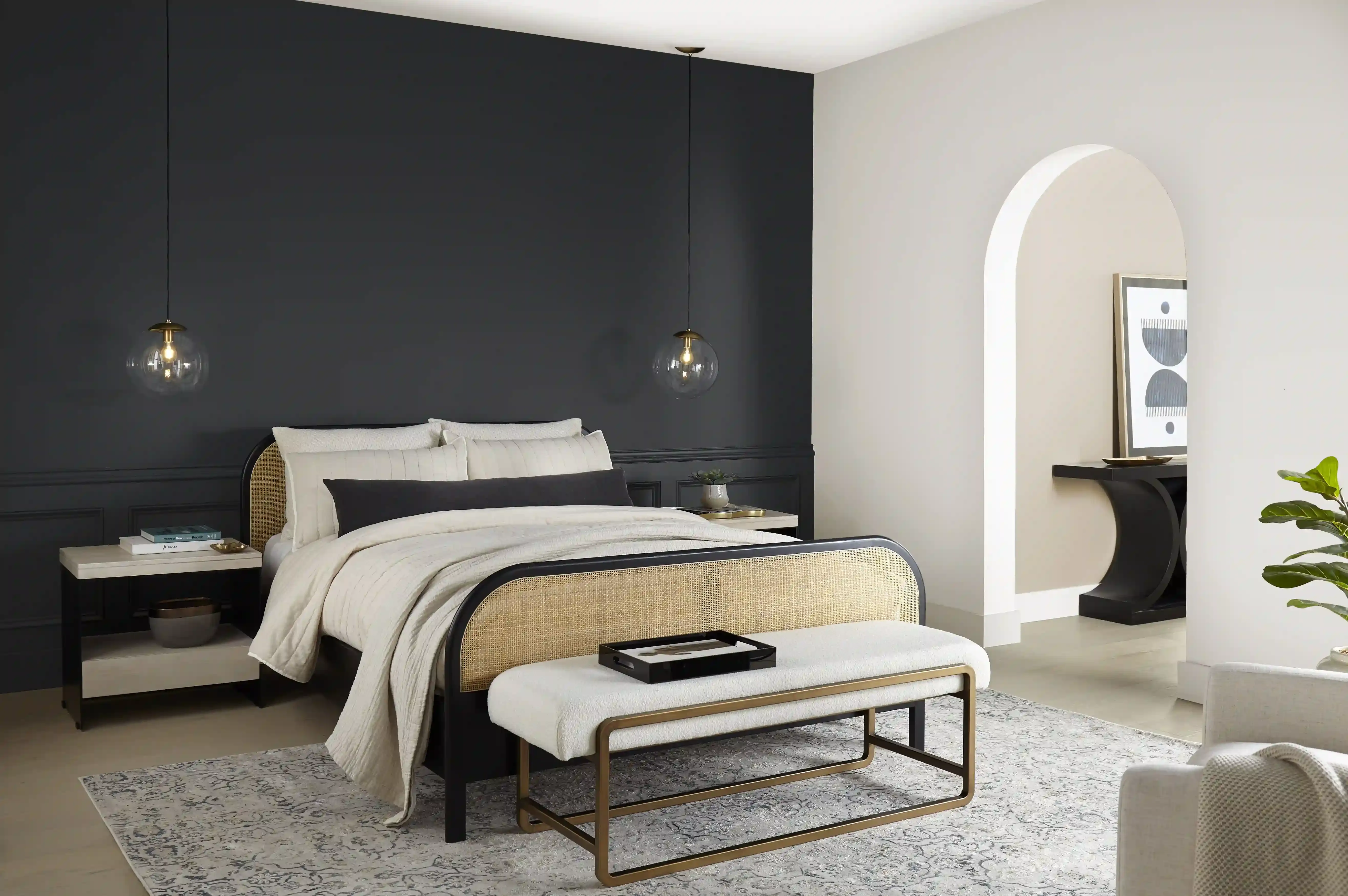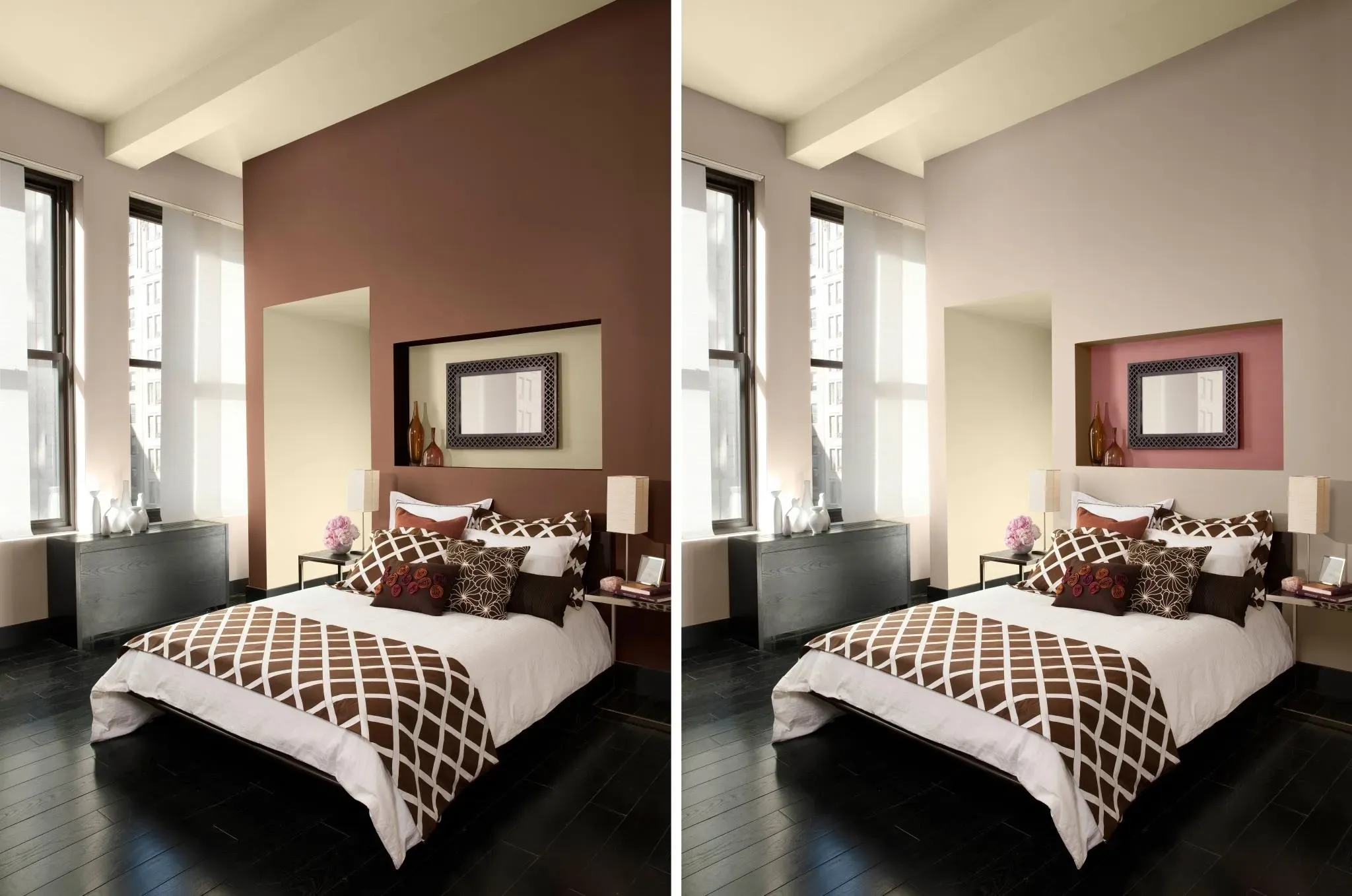Table of Contents
Staring at four walls the exact same color can feel like being stuck in a beige box. It's functional, sure, but does it spark joy? Probably not. Your living space should reflect *you*, not just some builder's safe bet. That's where the humble accent wall steps in. It's your chance to make a statement without repainting the entire house. But choosing the right shade? That's the critical part. Picking the wrong one can feel like a visual punch to the gut every time you walk in. That's why people are always searching for solid accent wall paint color ideas. This isn't just about slapping up a bright color; it's strategic. A well-chosen accent wall can make a small room feel larger, highlight artwork, or simply add depth and drama. In this article, we'll cut through the noise and give you some genuinely useful inspiration. We'll look at options that actually work, discuss how to pick a color that complements your existing decor, and share practical advice to make your bold move pay off. Ready to transform your space? Let's get started.
Why Bother with an Accent Wall?

Why Bother with an Accent Wall?
So, you're wondering, "" Fair question. It seems like extra work, right? Just paint all four walls and call it a day. But think about it: a room with four identical walls can feel a bit... flat. Like a polite handshake when you were hoping for a bear hug. An accent wall breaks up that monotony. It gives the eye somewhere to land, a focal point. It's the visual equivalent of adding a splash of hot sauce to a bland meal. It can highlight architectural features, make a large room feel cozier, or add a burst of personality without committing to a full room makeover. It’s a relatively low-effort, high-impact way to inject some life and intention into your space.
Accent Wall Paint Color Ideas for Every Room

Accent Wall Paint Color Ideas for Every Room
Living Room Accent Wall Paint Color Ideas
Alright, let's tackle the living room first. This is often the main stage, where you entertain or just collapse after a long day. The accent wall here needs to make a statement, but not scream in your face. Think about the feeling you want. Cozy and intimate? A deep navy, charcoal gray, or even a moody forest green can wrap the room in warmth. Want something more energetic? A terracotta or a muted teal might do the trick. The key is picking a color that complements your furniture and decor, not fights with it. I once saw someone paint their living room accent wall a blinding primary red against pastel furniture. It looked like a clown exploded. Don't be that person. Good accent wall paint color ideas for living rooms often involve shades that ground the space or add a touch of sophistication.
Bedroom Accent Wall Paint Color Ideas
Now, the bedroom. This is your sanctuary, your escape pod. The accent wall here should promote calm and relaxation, unless your idea of relaxing involves staring at hot pink. Most people lean towards soothing colors. Soft blues, dusty purples, or calming greens work wonders behind the headboard. This wall is the perfect spot because your eyes naturally go there, but it's not constantly in your peripheral vision when you're trying to sleep. A deep, saturated color like eggplant or a dark slate can feel incredibly cocooning. Avoid anything too bright or stimulating if you value your sleep. Trust me, waking up to a neon yellow wall is an experience you probably don't need.
Thinking about bedroom accent walls?
Consider these popular choices:
- Navy Blue: Classic and calming.
- Charcoal Gray: Modern and grounding.
- Forest Green: Natural and serene.
- Dusty Rose: Soft and romantic.
- Deep Teal: Sophisticated and tranquil.
Dining Room Accent Wall Paint Color Ideas
Moving on to the dining room. This space is all about gathering, sharing meals, maybe even having a lively debate or two. An accent wall here can add formality or a pop of fun. Bold colors work well because you're not spending hours staring at the wall like you might in a living room or office. A rich jewel tone like emerald green or sapphire blue can feel luxurious and inviting. If your dining set is dark wood, a lighter, contrasting color like a warm gold or a deep cream can make it pop. Alternatively, a graphic wallpaper on one wall can serve the same purpose as a painted accent wall, adding pattern and texture along with color. The goal is to create an atmosphere that makes people want to linger over dessert.
Choosing Your Bold Move: More Accent Wall Paint Color Ideas

Choosing Your Bold Move: More Accent Wall Paint Color Ideas
Beyond the Basic Blues and Grays
so we've touched on the classic choices for common rooms. But maybe you're feeling a bit more adventurous? Maybe you're tired of seeing the same five accent wall paint color ideas on every Pinterest board. Let's talk about pushing the envelope a little. How about a rich, earthy olive green in an office or study? It’s sophisticated but still feels calm. Or a warm, spicy paprika in a hallway or entryway? It makes a memorable first impression without overwhelming the space. Don't shy away from colors that have a bit of personality. A deep plum can be incredibly dramatic in a bedroom, or a vibrant, but not jarring, mustard yellow can add a surprising pop of energy to a kitchen or breakfast nook. The trick is to think about the *feeling* you want the color to evoke and how it plays with the existing elements in the room. It’s a balancing act, not a free-for-all.
Considering Light and Undertones
Picking a color from a tiny paint chip in a brightly lit store is a rookie mistake. That color is going to look completely different on your wall, in your house, with your specific lighting conditions. Trust me on this. Before you commit to gallons of paint, get a few sample pots of your top accent wall paint color ideas. Paint a decent-sized swatch on the wall you plan to accent. Look at it at different times of day – morning light, afternoon sun, evening lamps. Does that gorgeous deep blue suddenly look purple under your lamps? Does that warm gray turn into a cold, sterile shade? Light changes everything. Also, pay attention to undertones. Colors aren't just one note. That gray might have a blue or green undertone that clashes with your warm-toned furniture. That beige might have a pink or yellow undertone you didn't notice. Testing samples is non-negotiable if you want to avoid a costly mistake.
What's one common mistake people make when choosing accent wall colors?
Making Your Accent Wall Work: Tips and Tricks

Making Your Accent Wall Work: Tips and Tricks
Where to Put That Pop of Color
So, you've got your eye on a killer color. Great. Now, where exactly does it go? Don't just pick the first wall you see. The best spot for an accent wall is usually the one you want to draw attention to. This could be the wall behind your sofa in the living room, the wall behind the bed in the bedroom, or the wall where your fireplace sits. It should ideally be a wall without too many doors or windows chopping it up, unless those features are what you want to highlight. A solid stretch of wall works best to let the color truly make an impact. Think about the main sightline when you walk into the room. That's often your prime candidate. Putting it on a wall that's visually busy already might just create chaos instead of a focal point.
Coordinating with What You Have
Painting one wall a new color isn't happening in a vacuum. You've got furniture, rugs, artwork, and other bits and bobs already in the room. Your accent color needs to play nice with these existing elements. It doesn't have to match everything exactly – in fact, a little contrast is good – but it shouldn't clash. Look at the dominant colors and undertones in your larger pieces. Does your sofa have a cool gray tone or a warm beige one? Does your rug have hints of blue or green? Your accent color should either be a complementary color (opposite on the color wheel for a bold look) or an analogous color (next to it on the wheel for a more harmonious feel). Pulling a color from a favorite piece of art or a patterned pillow can also be a smart move. It ties the whole room together and makes the accent wall feel intentional, not just a random splash of paint.
Before you paint, ask yourself:
- Does the color complement my largest furniture pieces?
- Does it work with the colors in my artwork or textiles?
- Does it feel right for the mood I want in the room?
- Have I tested a sample on the wall in different lights?
The Nitty-Gritty: Prep and Paint
Picking the color is only half the battle. The execution matters. Don't skimp on prep work. Clean the wall, fill any holes or cracks, and sand smooth. Use painter's tape to get clean lines, especially where the accent wall meets the adjacent walls and the ceiling. A sharp line makes a huge difference. And for the love of all that is holy, use good quality paint. It covers better, lasts longer, and the color looks richer. You'll likely need two coats, maybe even three if you're going from a light color to a dark one. Don't rush the drying time between coats. Patience here prevents frustration later. This isn't a race; it's about getting it right so your new accent wall looks like a professional job, not a DIY disaster.
Your Accent Wall Awaits
So, you've considered the angles, eyed the color wheel, and maybe even taped up a few swatches. Choosing from all the possible accent wall paint color ideas isn't a life-or-death decision, but picking one that genuinely enhances your space feels pretty good. It's about adding a deliberate focal point, a bit of personality where there was none. Done right, it pulls the room together. Done wrong? Well, you can always repaint. The point is to make a choice, move past the bland, and give your walls something interesting to say. Your room will thank you.
